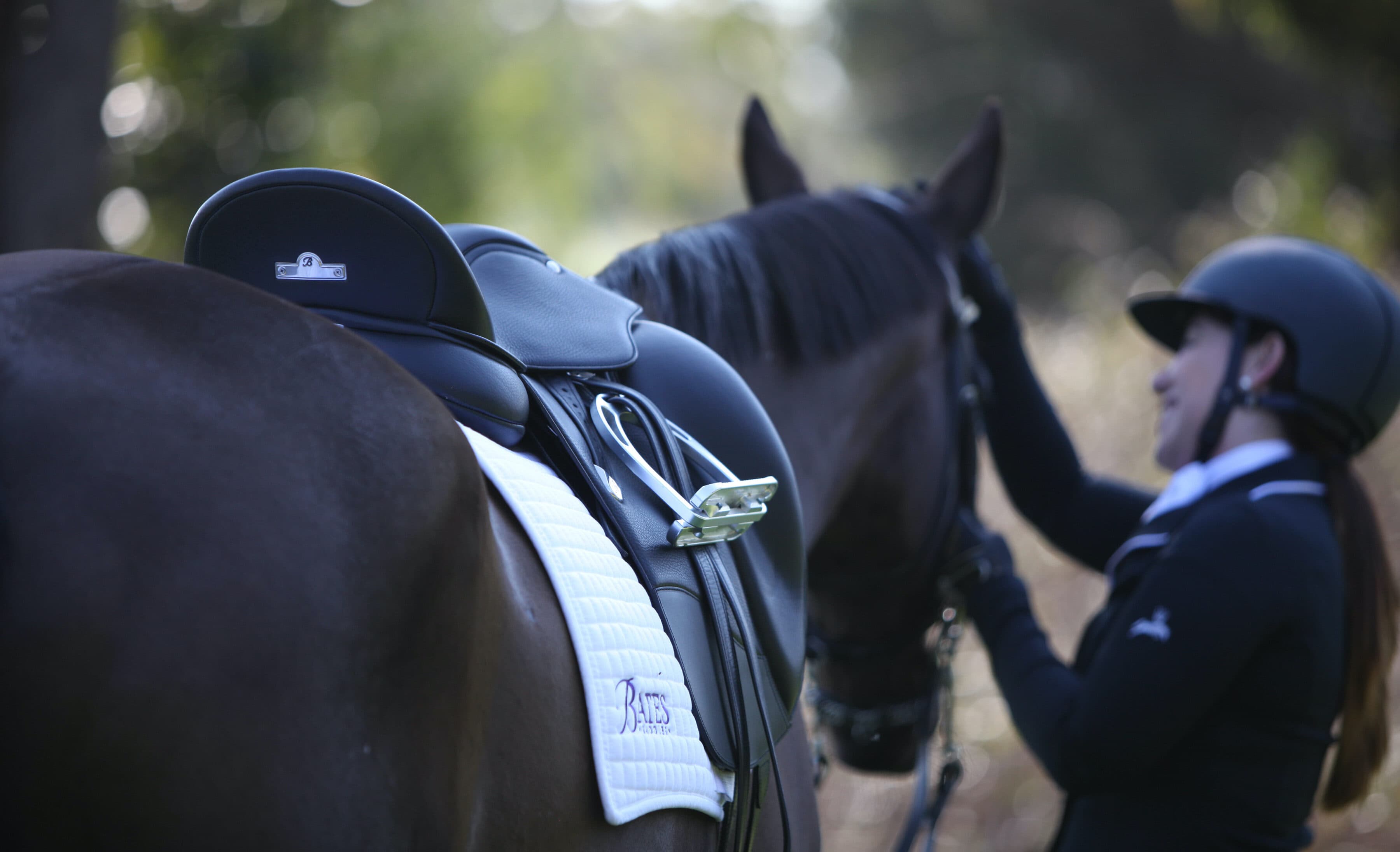Top 10 Tips for Leather Care with Bates Saddles

Tack cleaning is one of those barn chores that might not be our favorite but is certainly necessary for keeping our equipment in top shape. Aside from caring for your tack so it lasts for years to come, regular tack maintenance is important for safety. The last thing you want is the potential for a stitch, zipper, or buckle breaking while you're out on course. But what are the best practices for keeping your tack in the best possible condition?
Our friends at Bates Saddles, the Offical Saddle of the USEA, have shared some of their top tips for keeping your leather equipment in good and safe condition.
"Your saddle is one of the most important parts of your tack, and with proper care you will be able to enjoy it for many years," Bates said. "Maintaining your leather saddle in top competition condition for a long lifetime requires proper care throughout the season. Here are our key tips for any leather saddle. However, we recommend all riders check with their saddle manufacturer for specific care guidelines."
- If your saddle is a little neglected, you are not alone. If your saddle has been sitting in a tack shop or barn for quite a while, try this treatment to show it some love. After a clean, apply a good quality wax-based balsam liberally and really work it into the leather, before leaving it to soak in – for a few hours, or even overnight! The overnight process ensures those fats penetrate more deeply for improved suppleness and strength. With a soft cloth, buff away any excess remaining on the surface of the leather. Not only will your saddle look beautiful, but you can enjoy that feeling of knowing it has a protective barrier against the harsh elements of daily use.
- A good cleanse is essential before you moisturize. Prepare your leather before applying dressings. Start by removing anything attached to your saddle such as stirrup leathers to ensure you can fully inspect and clean all areas of your saddle. Begin with a simple glycerin saddle soap and a damp sponge to loosen any surface dirt and oil that may otherwise have scratched the surface. Your leather is now primed ready to better absorb your dressings, be they a conditioning cream, or wax-based balsam.
- Then, replenish the moisture. After any cleaning, it’s important to ensure that your saddle has enough moisture to protect the leather, especially in the high-wear areas of your saddle, such as the top of the flap where your stirrup leathers go. There are a variety of saddle conditioners and balsams available. A wax-based balsam will not only replenish the fats in the leather, but provide a sealant through its wax content to assist in waterproofing and repelling sweat. A leather conditioner or cream is a lighter alternative where your leather is in prime condition.
- Keep up regular maintenance. Let’s face it, we know that for many of us, our leather care kit only makes an appearance just before a show or an event. You would not believe the difference regular conditioning of your saddle will make toward keeping it looking like new over many, many years! Take a mental note of how your saddle feels, the condition of the surface grain, and the depth of color. If ever you notice it changing, act early to prevent premature wear, conditioning it more frequently and with more product or a richer wax-based product. If your saddle is made with high-quality, naturally finished leather, your saddle is going to need regular conditioning.
- Riding in the rain or through water jumps? If you know your saddle is going to get wet, a good quality balsam, especially a wax-based one will act as a pre-ride protective barrier for your saddle to assist in repelling water and sweat. We recommend applying it with enough time for it to soak in and dry before your ride, such as the night before a big event.
- To oil or not to oil? Riders today are spoiled with the beautiful quality of the leather saddlers have available to source and oiling is not only unnecessary, it risks over-softening your leather, which cannot be reversed. If your saddle is ‘covered’ or double lined, you can also risk any laminations between the leathers breaking down, separating and your saddle becoming vulnerable to premature wear. In particular, the billets of a saddle should never be oiled, as we do not want them to stretch in use. If you have a Bates Saddle, especially one with beautiful luxe leather, a quality rich wax-based balsam is simply the best care you can offer.
- Has your saddle lost some of its color? Good on you for spotting a change in your leather! The quicker you act now with a restoration program, the better your chances of reversing that color loss. Color loss can be from exposure to the sun, leaching the fats out of your leather, and fading with UV. You may also see a change in color in high wear areas, where you have worn through the surface grain. What is important here is not only replenishing the fats in your leather with a wax-based balsam, but really polishing and working that balsam into the leather as this will help restore a depth of color and recreate a resilient surface grain. Leather is a living material and remarkably resilient!
- Whoops – caught in the rain? Okay, take a deep breath - time and patience are what is required now. Keep your saddle away from any direct heat, but in a warm and ventilate space and WAIT. Your saddle must dry out completely, which may take days – don’t rush it. Once dry, you can give it a good conditioning.
- Storing your saddle. Ideally, your saddle should be stored in a dry and ventilated room with a dust cover. Avoid storing your saddles where there is a high level of humidity as these conditions make your saddle susceptible to the presence of mold spores in your leather. Check that the panels of your saddle (that contact the horse’s back) are supported by the stand or rack on which it is placed. Avoid stacking saddles or placing them on anything that could cause an indentation. Be mindful that saddles should not be left on a floor, or leaned up against a wall – in particular, jump saddles left with pressure on the front of the saddle flaps will over time affect the inclination for them to ‘ride back’ when jumping.
- Do a good safety check! When you take the time to clean and replenish the moisture in your saddle, you are looking at every part from near the stirrup bar, to your girth points/billets, the panel, and the under-flaps. Take this chance to look at the condition of your billets, the evenness and softness of your panels, the strength of your tree, stirrup bars - If you suspect you may need to repair or replace a part of your saddle, simply reach out to your saddle’s manufacturer or local representative for advice.
Want more tips from top professionals? Check out other articles in our Top 10 Tips series!














